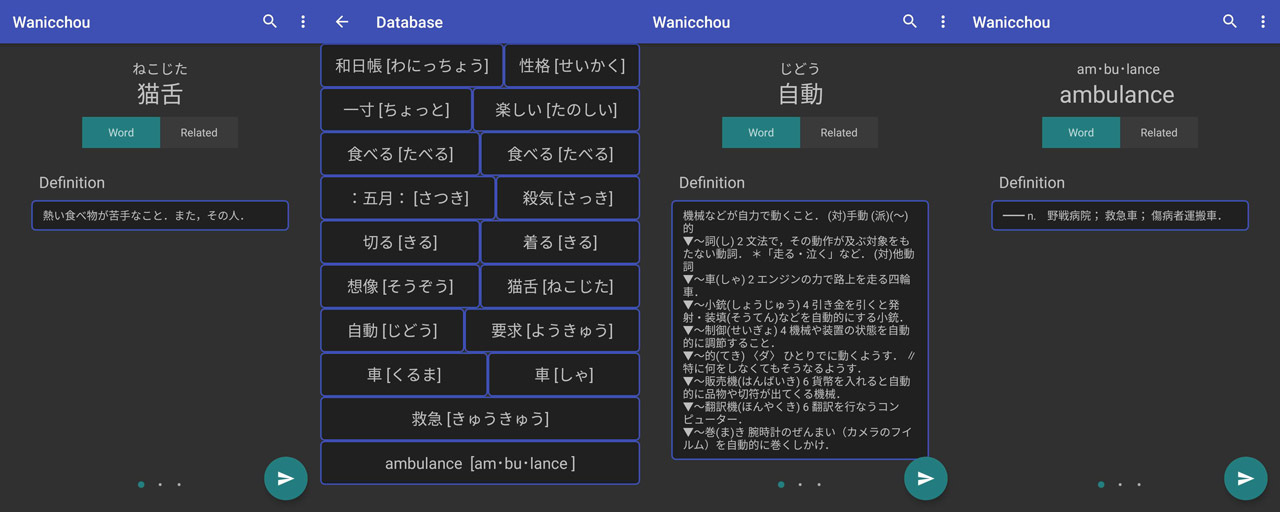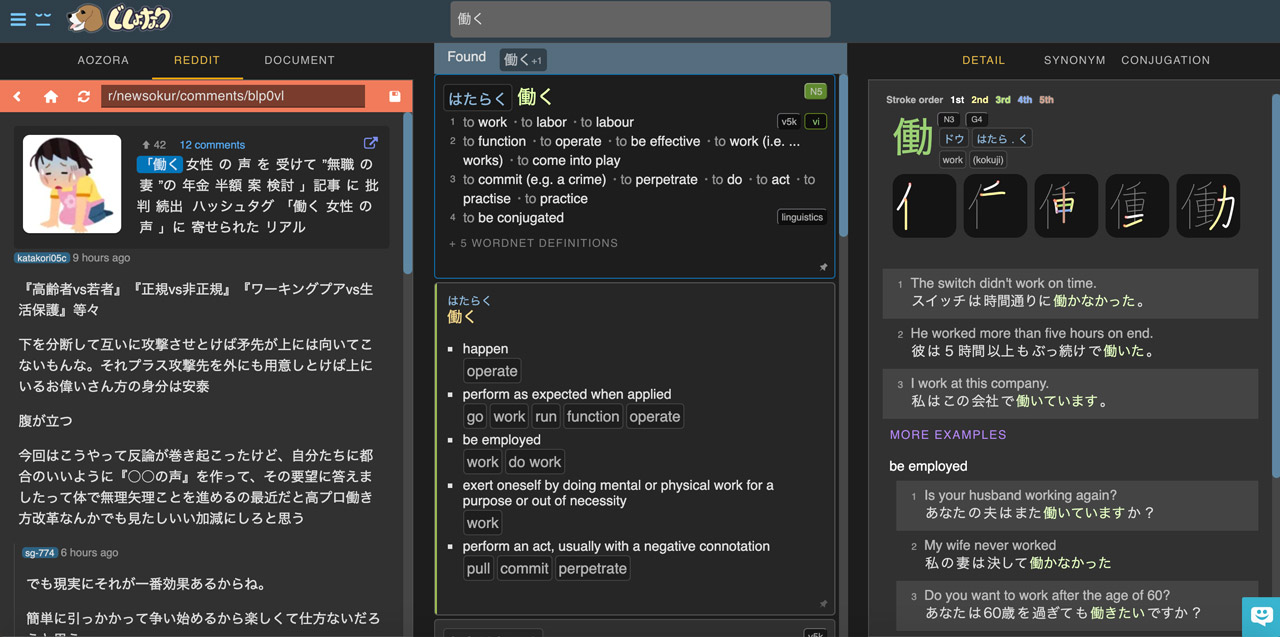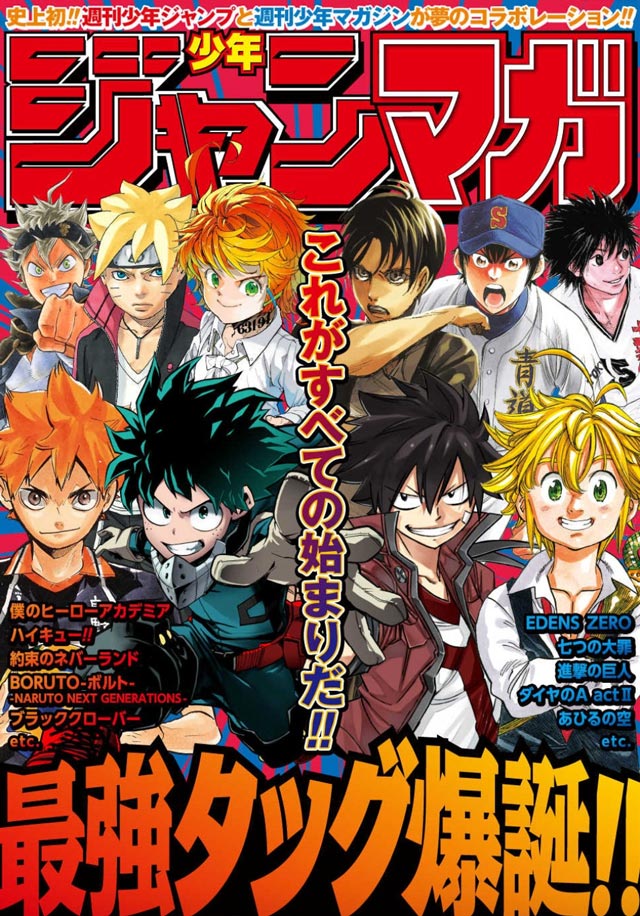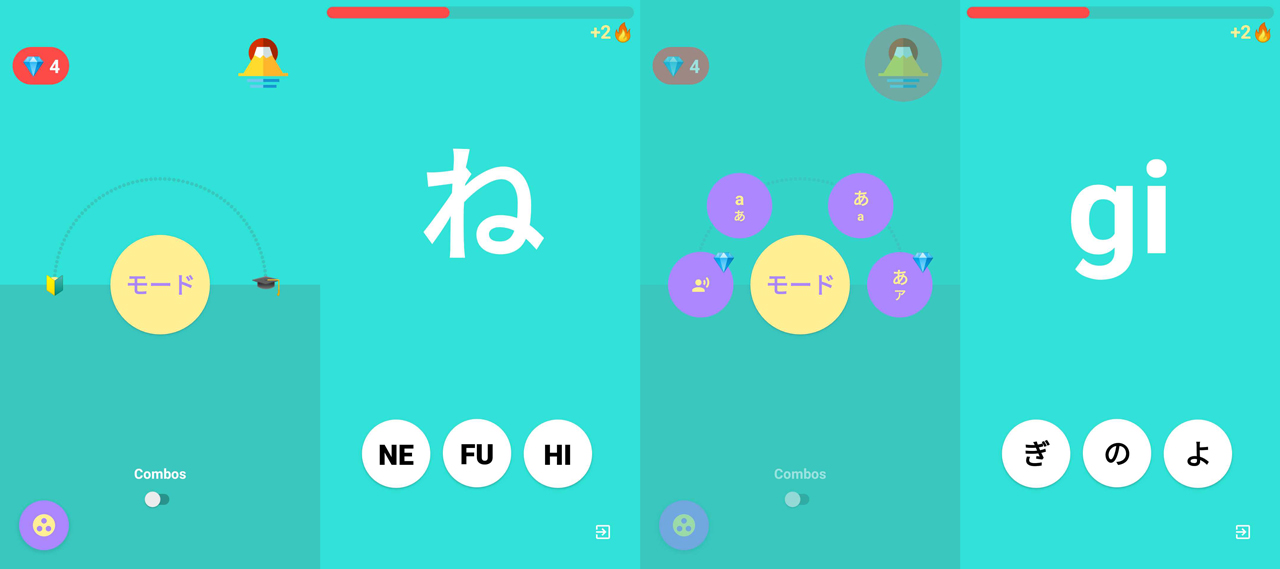April showered us with tons of lovely new Japanese learning resources. We have an amazing selection: new apps, new shows, new games—even a brand-new social media platform just for Japanese speakers! (Whaaaat?!) Let's go!
和日帳: Wanicchou

In the past, we've written about how important it is to start using Japanese-only (J–J) dictionaries as soon as you can. For most learners, this is usually around the intermediate level.
However, anyone learning to speak Japanese can benefit from Wanicchou, a new Android dictionary app with a J–J option. It may look bare-bones, but using Wanicchou is easy and intuitive: search for a word in kanji or kana, then read the definition in the box below. If you search in kana, tap “Related” to see words with the same reading, then tap the results for a definition. Swipe left on the “Word” tab to add study notes on the vocabulary or the definition; swipe left on the “Related” tab to add tags to organize your studies.
If you're not yet at the intermediate level, you can change the language to English to get a J–E or E–J dictionary experience. And, if you want to see the definition of a word you searched for two days ago, you can check the database, where all your previously looked-up words are saved.
Jishonari

In the course of this series, we've introduced a lot of online Japanese dictionaries, but it's hard to think of one quite like Jishonari, which has so many features packed into one site. It's astounding!
Jishonari is divided into three panels:
-
Japanese reader: Browse the newsfeed from either Aozora Bunko or Reddit, or paste in your own text. Once you're reading, click on any word to bring up definitions and info galore.
-
Definitions: Whenever you search for a word or click one in the reader, the definitions appear here. You can get JMDict definitions, as well as related definitions from WordNet.
-
Details/synonyms: Example sentences from tatoeba and synonyms live here, as well as stroke order and readings for words with kanji. Search for a verb, and you'll get conjugations too.
If you're on the hunt for a new Japanese dictionary experience, you've found it.
This is just the tip of Jishonari's iceberg. All over the page, you can click and hover to reveal more information, ever-unfolding into an incredible rabbit-hole experience. There's even a dark mode!
It's hard to convey just how much information explodes from Jishonari every time you search (and you can search in romaji, kanji, kana, conjugated forms, English, and more). To give you an example, here's a table showing everything we found when we looked up 食べる:
| JMDict definitions | WordNet definitions | Example image (of a person eating noodles) |
| JLPT level | Part of speech | Kanji |
| Kanji jōyō grade | On'yomi/kun'yomi readings | Stroke order |
| Example sentences | Synonyms | Conjugations |
See what we mean? With all these features, Jishonari may seem like the obvious choice for your new go-to dictionary. And it just might be! Its major strength also happens to be its biggest drawback—because it's so full-featured, it can be hard to navigate and find the information (or the most accurate definition) you're looking for, especially when you're searching for a word you've never seen before.
Still, if you're on the hunt for a new Japanese dictionary experience, you've found it. Jishonari offers all kinds of options to explore and play with.
日本語人: Nihongozin
日本語人 (romanized Nihongozin) is an iPhone app from the team behind the incredibly popular Japanese language-teaching YouTube 日本語の森 (Nihongo no mori).
Nihongozin's goal is to become an online community for Japanese speakers and learners from all over the world. Unlike other social media apps, this one allows you to see posts by everyone using the app without needing to follow or friend them.
Users upload images and short videos from their devices or link entire YouTube videos to share with each other. Users can upvote, downvote, comment, and re-share each other's posts to their own profiles. The profiles themselves are also specialized for Japanese speakers, letting you choose the highest JLPT level you've passed (or the level you're currently studying to pass), or indicate that you're a native speaker.
While the entire app and its posts are in Japanese, Nihongozin contains a function for Japanese—or more specifically, kanji—learners. When reading a description for a post or comment, users can click a "Furigana" button (or do a long press on the text) to show it above the kanji.
A couple of caution points. First, at least at the time of writing this, Nihongozin requires users to share their location, so you can view other users nearby, converse with them privately, or block them if you choose to. (This is social media, after all—others can see your location unless you block them.)
Some users have a special ガイド (guide) marker indicating that they're available as guides for hire. If they are, you can also see their available times, rates, and location. If you're looking for a tour guide or Japanese tutor, for example, you can find them through the app. You can also be a guide for Japanese folks visiting your city. Needless to say, whether you're looking for a guide or offering to guide others, be extremely careful. Other than the blocking option, the app provides no protection, and no payments are done through the app itself. Posting on Nihongozin is like creating a listing on Craigslist.
Safety aside, we wish we'd had this app when we were studying Japanese in our younger days. It struck us as a great resource for learners who don't have many Japanese-speaking friends. Hope to see all of the sakura and tea pics from your trips posted there!
Rilakkuma and Kaoru
Rilakkuma and Kaoru is probably the sweetest yet most crushingly realistic stop-motion animated series you'll ever see. It focuses on a typical office worker named Kaoru, who happens to live with Rilakkuma (a lazy stuffed bear), Korilakkuma (Rilakkuma's best friend and a smaller bear), and Kiiroitori (the best character, I mean, a bird).
With such short episodes, Rilakkuma and Kaoru is easy to watch and learn from in bite-sized sittings. It's a nice addition for users already watching or reading other manga like Yotsuba&! or Polar Bear Cafe.
Each episode is only about twelve minutes long and takes place in one month of a year, for a total of thirteen episodes. Most of the show covers mundane situations with surreal elements sprinkled in. A woman lives with what appear to be three stuffed animals who move around and communicate on their own… so what's a couple of mushrooms or a ghost on top of that?
The language is simple at times, but each episode has a few trickier sections in which the protagonist (or antagonist) speaks quite quickly. You'll also meet a few different character types—fast-talking kids, weird bosses, lazy ladies—who all speak differently, to help you sharpen your listening skills.
With such short episodes, Rilakkuma and Kaoru is easy to watch and learn from in bite-sized sittings. It's a nice addition for users already watching or reading other manga like Yotsuba&! or Polar Bear Cafe. Thanks to Netflix, the show also has Japanese and English subtitles to help with your listening comprehension. If you're looking for something depressing yet uplifting, slice-of-life yet surreal, and beautifully crafted, put Rilakkuma and Kaoru on your study list.
少年ジャンマガ学園

Have you ever wanted to read the first book in a manga before buying it to make sure 1) that you'll like it, and 2) that you'll be able to understand it at your level? Publishers Kodansha and Shueisha have got you covered. (Well, they have you covered as long as you're under twenty-two… or just input a different birth year.)
少年ジャンマガ学園 (Shōnen Jump x Magazine Academy) is an online collection of first issues for many of the most popular shōnen manga series. With more than seventy series, this collection includes One Piece, HUNTERxHUNTER, Attack on Titan, Bakemonogatari, My Hero Academia, Haikyū, and Boruto. That means it provides more than 3,500 pages of study material that's interesting, challenging (seriously), and free!
Because the pages are made of images, you can't highlight or copy text, but you can read through issues you're interested in to see how much you can understand before committing to purchasing an entire volume. You can also preview how much furigana is provided for each volume, which may help you find a series at or around your level.
The pages automatically expand to your screen, so in order to read some furigana you may have to do some stretching and zooming. While that's a bit inconvenient, conversely, that same thing may also keep you from reading furigana on words or kanji you already know.
This free collection will help you find your new favorite manga/study tool. Let's hope Shōnen Jump and Shōnen Magazine keep it going!
Hiragana Easy

Hiragana Easy is an Android app you can use to practice kana on the go. The visuals are some of the nicest we've seen for this kind of app, so if pretty practice is important to you, check this one out.
As soon as you open the app, you're met with four modes: two free and two that require payment, either in time or money. The free modes are:
- a → あ: see Roman characters, tap Japanese kana
- あ → a: see Japanese kana, tap Roman characters
You can access the other two modes either by paying $.99 or by spending "gems," which you earn by watching ads. The “locked” modes are:
- Audio mode: listen to the pronunciation and tap kana
- あ → ア: see katakana, tap hiragana, or vice-versa
The visuals are some of the best we've seen for these kinds of apps, so if pretty practice is important to you, check this one out.
For any mode, Hiragana Easy serves you up five items, and you answer by tapping one of three multiple choice boxes at the bottom of the screen. Then you get a results page.
Lots of free apps have ads, but Hiragana Easy shows you a thirty-second ad after every five items you review. We found this to be a major (and repetitive) interruption to the study session. If you wanted to study all forty-six hiragana characters, you'd see nine ads!
The solution is to pony up a dollar for a lifetime, ad-free version. Try the free version first so you can figure out if Hiragana Easy will help you evolve from the kana stage towards your next study goal.
npckc games
First of all, a huge thank you to Chase for recommending this resource to us!
Writer and game developer npckc makes pay-what-you-wish visual novels. While npckc offers many games to choose from, all with many language options, we played one night, hot springs and its sequel last day of spring, which are set in Japan.
The story follows a nineteen-year-old trans woman named Haru through the anxiety, fears, and difficult situations she has to deal with on a daily basis. In one night, hot springs, her childhood friend, Ami, invites her to go to a fancy hot spring on her birthday. Unfortunately, this isn't an invitation Haru can easily accept.
The game portrays the constant struggles trans people face, with a focus specifically on the onsen (hot springs), a common destination for tourists and native Japanese. If you are trans, the story is worth playing for the comfort and celebration of a shared experience; if you're not, it provides a valuable perspective.

How do these games help you learn Japanese? By being visual novels! You can move through the text at your own speed. There is no voice-acting or furigana, so you have to rely on your own knowledge of Japanese, kanji, and context to figure out what's going on. The conversations and situations will help you become familiar with terminology you won't necessarily get from textbooks. In the case of one night, hot springs, there is also onsen and transgender-specific terminology and phrases to pick up.
If you miss a line or need to go back to review, arrows at the bottom of the text box are there to help you navigate between lines. If you get stuck, you can revert to your native language. Supported languages include English, Japanese, Dutch, Spanish, Portuguese, Vietnamese, Korean, Indonesian, Russian, and Traditional Chinese! If you want to save a particular spot to study again later, you can do that too.
These and npckc's other games are worth playing simply because they are thoughtful and interesting. The fact that they can help with your Japanese reading as well makes them a great addition to anyone's "games to study with" list.
Goodbye, April! Hello, May! Let's keep this amazing J-learning train going all year! If you're on top of the latest Japanese learning info, please send your faves our way (to hello@tofugu.com or on Twitter @tofugu). If you do, we'll tell the world that you're great… just like Chase! 💖
